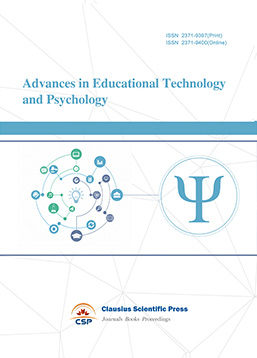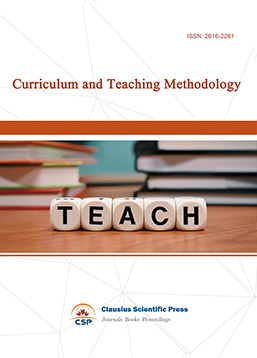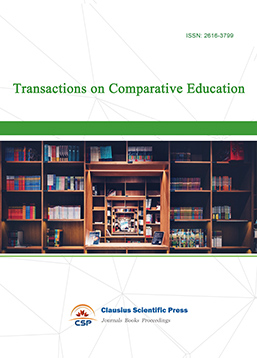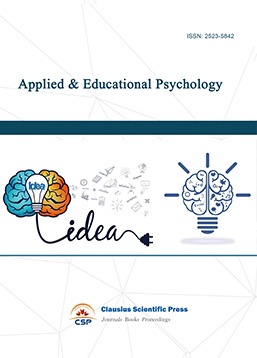CDIO in Bioinformatics Curriculum: A Case Study on Sequence Alignment
DOI: 10.23977/aduhe.2024.060717 | Downloads: 16 | Views: 1287
Author(s)
Jinming Gao 1, Sijia Zhang 1, Dongsheng Chen 1, Xianzhao Kan 1
Affiliation(s)
1 College of Life Sciences, Anhui Normal University, Wuhu, 241000, China
Corresponding Author
Xianzhao KanABSTRACT
Bioinformatics, which combines biology, computer science, mathematics and information technology to understand biological data, is becoming more and more important in modern life science and medical research. However, traditional bioinformatics education often focuses on theoretical knowledge, while ignoring practical skills. The CDIO framework, which stands for Conceive, Design, Implement, and Operate, is an innovative educational method to cultivate the next generation of engineers. In this study, we investigate how the CDIO engineering education framework can improve the bioinformatics curriculum, with a focus on teaching sequence alignment. We designed four teaching modules. These modules were created based on the CDIO framework, emphasizing both theoretical knowledge and practical skills. Through these CDIO-based methods, we ensure that students can gain essential skills for careers in bioinformatics and related areas.
KEYWORDS
CDIO, Bioinformatics Curriculum, Sequence alignmentCITE THIS PAPER
Jinming Gao, Sijia Zhang, Dongsheng Chen, Xianzhao Kan, CDIO in Bioinformatics Curriculum: A Case Study on Sequence Alignment. Adult and Higher Education (2024) Vol. 6: 119-125. DOI: http://dx.doi.org/10.23977/aduhe.2024.060717.
REFERENCES
[1] P. K. Akalın (2006) Introduction to bioinformatics. Molecular nutrition & food research. 50: 610-619.
[2] S. Ranganathan (2005) Bioinformatics education—perspectives and challenges. PLoS computational biology. 1: e52.
[3] J. Ramsden (2023) Bioinformatics: an introduction. Springer Nature.
[4] E. B. Işık, M. D. Brazas, R. Schwartz, B. Gaeta, P. M. Palagi, C. W. van Gelder, P. Suravajhala, H. Singh, S. L. Morgan and H. Zahroh (2023) Grand challenges in bioinformatics education and training. Nature Biotechnology. 41: 1171-1174.
[5] B. Taneri (2011) Is there Room for Ethics within Bioinformatics Education? J. Comput. Biol. 18: 907-916.
[6] S. B. Needleman and C. D. Wunsch (1970) A general method applicable to the search for similarities in the amino acid sequence of two proteins. Journal of molecular biology. 48: 443-453.
[7] T. F. Smith and M. S. Waterman (1981) Identification of common molecular subsequences. Journal of molecular biology. 147: 195-197.
[8] F. Madeira, N. Madhusoodanan, J. Lee, A. Eusebi, A. Niewielska, A. R. Tivey, R. Lopez and S. Butcher (2024) The EMBL-EBI Job Dispatcher sequence analysis tools framework in 2024. Nucleic Acids Research. gkae241.
[9] W. R. Pearson (1999) Flexible sequence similarity searching with the FASTA3 program package. Bioinformatics methods and protocols. 185-219.
[10] S. F. Altschul, W. Gish, W. Miller, E. W. Myers and D. J. Lipman (1990) Basic local alignment search tool. Journal of molecular biology. 215: 403-410.
[11] E. F. Crawley, J. Malmqvist, S. Östlund, D. R. Brodeur, K. Edström, E. F. Crawley, J. Malmqvist, S. Östlund, D. R. Brodeur and K. Edström (2014) The CDIO approach. Rethinking Engineering Education: The CDIO Approach. 11-45.
[12] L. Nyka, J. Cudzik and K. Szakajło (2020) The CDIO model in architectural education and research by design. World Transactions on Engineering and Technology Education. 18: 85-90.
[13] P. Armstrong and R. Niewoehner (2008) The CDIO approach to the development of student skills and attributes. Proceedings of the 4th International CDIO Conference, Hogeschool Gent, Belgium.
[14] A. Chuchalin, M. Tayurskaya and J. Malmqvist (2015) Faculty development programme based on CDIO framework. Proceedings of the 2015 International Conference on Interactive Collaborative Learning (ICL).
[15] J. Malmqvist, K. Edstrom, S. Gunnarsson and S. Ostlund (2006) The application of CDIO Standards in the evaluation of Swedish engineering degree programmes. World Transactions on Engineering and Technology Education. 5: 361.
[16] M. Säisä, S. Määttä and J. Roslöf (2017) Integration of CDIO skills into project-based learning in higher education. Proceedings of the Proceedings of the 13th International CDIO Conference.
[17] F. Smulders, A. Kamp and C. Fortin (2018) The CDIO framework and new perspectives on technological innovation. Proceedings of the 14th International CDIO Conference.
[18] C.-F. Lai, H.-X. Zhong and P.-S. Chiu (2021) Investigating the impact of a flipped programming course using the DT-CDIO approach. Computers & Education. 173: 104287.
[19] A. S. MUSHTAK AL-ATABI and M. AL-OBAIDI (2011) CDIO curriculum for mechanical engineering undergraduate course. Journal of engineering science and technology. 6: 251-259.
[20] S.-M. Cheah (2009) Using CDIO to revamp the chemical engineering curriculum. Proceedings of the 5th International CDIO Conference.
[21] P. Armstrong, R. Kee, R. Kenny and G. Cunningham (2005) A CDIO approach to the final year capstone project. Proceedings of the 1st Annual CDIO Conference.
[22] M. K. Wedel, J. Malmqvist, M. Arehag and M. Svanström (2008) Implementing engineering education for environmental sustainability into CDIO programs. Proceedings of the Proceeding of the 4th International CDIO Conference.
[23] L. J. Leslie, P. C. Gorman and S. Junaid (2021) Conceive-design-implement-operate (cdio) as an effective learning framework for embedding professional skills. International Journal of Engineering Education. 37: 1289-1299.
[24] J. Antokhina, V. Olenev and Y. Sheynin (2016) CDIO implementation experience for the masters training at SUAI. Proceedings of the Proceedings of the 12th International CDIO Conference, Turku University of Applied Sciences, Turku, Finland.
| Downloads: | 22176 |
|---|---|
| Visits: | 1244487 |

 Download as PDF
Download as PDF



